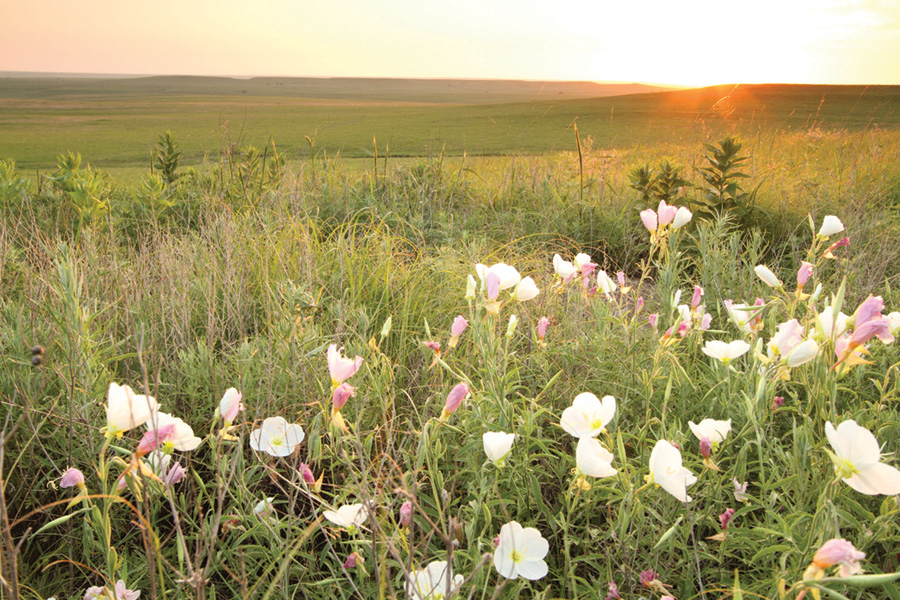Flint Hills of Kansas
Once 400,000 square miles of tallgrass prairie covered North America. Now less than 4 percent remains—most of it in the Flint Hills of Kansas. It has never been plowed under because the steely flint close to the surface impedes even the best efforts of the plow shear. The gray and white rock exposed on the prairie, and which you can readily see dotting the hillsides, is interlayered limestone and flint, more scientifically known as chert. Flint, which is composed of the crystalline compound silica, was formed in this area more than 250 million years ago. Each spring about 100,000 stocker cattle from all over the United States come to the Chase County prairie to graze for 90 to 150 days (between May and July) on some of the most nutritious grass in the world. On an average, most cattle gain two pounds per day during their visit to the lush Flint Hills. (Photo: Harland Schuster for the 8 Wonders of Kansas project)


